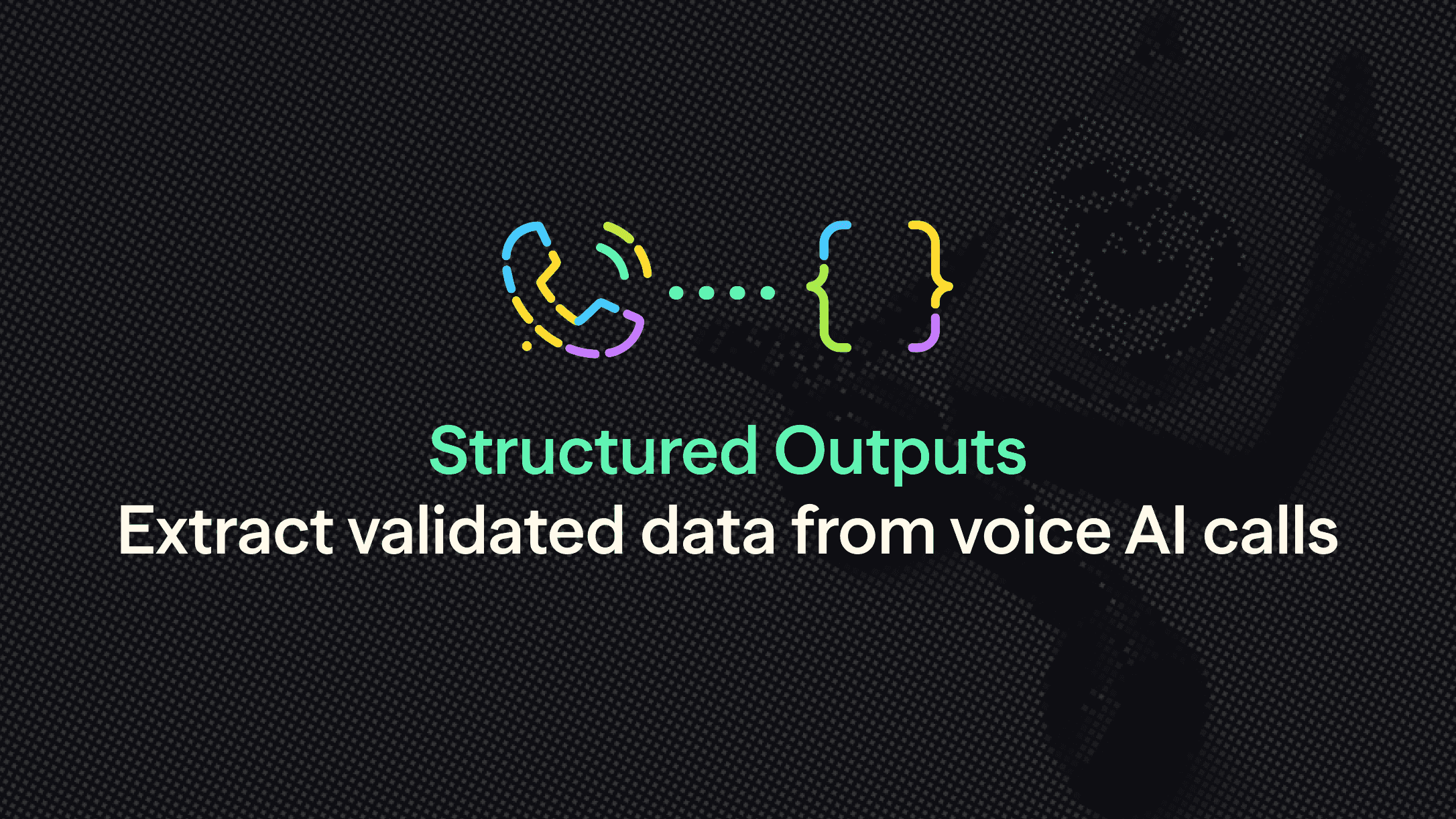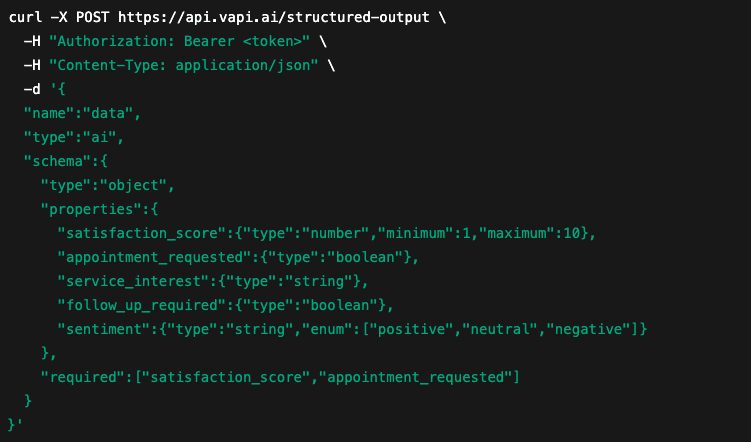Structured Outputs: Extract validated data from voice AI calls

The Vapi platform now supports structured outputs for all voice AI assistants. This feature ensures every call extracts data that matches your specified JSON schemas, eliminating parsing errors and failed data processing.
With structured outputs, developers can build voice AI applications that return predictable data formats, whether you're updating CRMs, feeding analytics pipelines, or powering ML models.
Building predictable voice applications
For developers building voice AI applications in production, inconsistent data extraction creates cascading failures. Manual transcript parsing breaks when conversation flows change. LLM outputs return inconsistent formats that require defensive parsing and validation logic.
Structured outputs solves this by ensuring your extracted data matches the exact schema you define, without any impact to model performance. This makes voice AI predictable for applications where data consistency is critical, including:
CRM updates where customer information must match existing field types and constraints.
Analytics and reporting where missing or malformed fields break dashboards and business intelligence tools.
ML model training where structured data feeds recommendation engines and statistical models.
Call quality control where specific metrics must be captured consistently across all interactions.
Structured outputs can extract any data you define: customer details, satisfaction scores, appointment bookings, support ticket information, or compliance verification flags. You provide your JSON schema definition, attach it to assistants, and every call returns validated, structured data.
The result is consistent data extraction, reduced error handling, and simplified application code that no longer needs complex fallback logic for malformed outputs.
How it works
Instead of parsing free-form transcripts or hoping LLMs return clean JSON, you define exact schemas with types, constraints, and validation rules:
Here's how you create a structured output via API
 Curl POST request
Curl POST request
After a call completes, you receive validated data
 The extracted results
The extracted results
Vapi enforces these schemas at runtime using provider-native structured output capabilities from OpenAI, Anthropic, and other LLM providers. You get predictable, machine-readable data that flows directly into your application logic.
Reusable across assistants
Define schemas once in the structured outputs catalog and attach them to multiple assistants. Your support, sales, and onboarding assistants can all extract customer satisfaction using the same schema, ensuring consistent data formats across your entire voice AI system.
When you update a schema, all attached assistants start using the new format immediately.
Provider-agnostic implementation
Structured outputs work across OpenAI, Anthropic, Gemini, and other providers. We handle provider-specific implementations and normalize responses, so changing LLM providers doesn't break your data extraction logic.
API integration
Extracted data is included in call completion webhooks and available through the REST API. Your existing application infrastructure receives clean, typed data without additional parsing layers.
Customer spotlight: Healthcare AI Platform
A healthcare AI platform processes thousands of patient intake calls daily, extracting medical information for electronic health records.
"Before structured outputs, we spent significant engineering time building resilient parsing logic and handling edge cases where the LLM didn't return properly formatted patient data. Structured outputs eliminated those reliability issues completely. Our intake calls now produce consistent, validated data that flows directly into our EHR systems without manual intervention," said their Head of Engineering.
What's included
Structured outputs are available now for all Vapi customers:
JSON Schema support with validation, constraints, and nested objects
Catalog management for defining and organizing schemas across your organization
Multi-assistant deployment to reuse schemas across different voice AI workflows
Provider-agnostic extraction with automatic failover and normalization
REST API access for programmatic schema management
Webhook integration with extracted data included in call completion events
Real-time validation ensuring every call produces schema-compliant data
Getting started
Production voice AI applications don't parse transcripts. They extract structured data. Companies building voice AI at scale use structured outputs to eliminate data pipeline failures and simplify application logic.
Structured outputs ensure your voice AI calls produce clean, validated data that flows directly into your systems without manual processing or error-prone parsing.
























